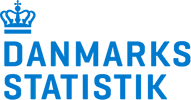Migration and residential segregation in European cities – now and future
Analysis and projections of immigration and spatial distribution of immigrants
The report focuses on patterns of immigration and determinants of settlement patterns of foreigners in the past and possible futures of spatial allocation of this group in these European cities, which each have a different size of foreign population and a different history of migration. To achieve this, we have gathered and harmonised data on foreign population at grid cell level for the period 1990-2020 (where possible).
Moreover, we have analysed the spatial allocation and prepared multi variant scenario projections on allocation in the future given national and regional trajectories of change. Historical and projected data has been analysed based on 100m x 100m grid cell information which is a significant advantage over working on administrative level data because, among others, it avoids the Modifiable Areal Unit Problem (MAUP). As Musterd (2005) points out MAUP prevents reliable comparisons of segregation levels and patterns between areas of different sizes, as well as between different countries, while ideally, comparative studies use uniform units of measurement. Thus, in our study we can compare results from different cities. Moreover, we could construct comparable neighbourhoods of similar size (100 meters) around each inhabitant of the cities to provide analysis on different angles that enriches a grid cell level study.
The report has been created within Work Package (WP) 6 of the project Future Migration Scenarios for Europe, entitled “Perspectives of migration – thematic studies”. This WP aimed at improving the understanding of patterns and consequences of migration in selected European cities, namely Amsterdam, Copenhagen, Krakow, and Rome.









